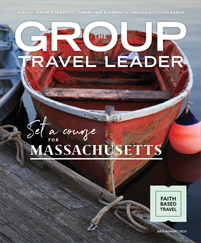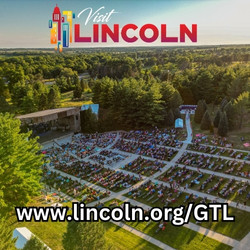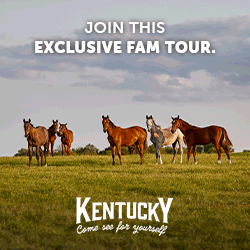From a space shuttle simulator to a presidential cabinet room and deep-cave adventure, there are innumerable places to learn in the South.
Teachers and school administrators around the country know that travel can create unmatched educational opportunities for students, and they plan overnight trips as part of their curriculums for key years during middle school, high school and college. Many of those trips take students to destinations throughout the South, where interactive experiences and teachable moments abound in museums, living-history sites, national parks and other great attractions.
Student-travel planners and tour operators will find great programming and exclusive tour opportunities at landmarks like Colonial Williamsburg in Virginia, the U.S. Space and Rocket Center in Alabama and the Clinton Presidential Center in Arkansas. Atlanta’s robust museum scene offers dozens of student programs. There’s also adventure to discover further afield at places like the decommissioned West Virginia Penitentiary and Kentucky’s Mammoth Cave National Park.
Colonial Williamsburg
Williamsburg, Virginia
One of the most popular student destinations in the South, Colonial Williamsburg immerses young people in the world of 18th century Virginia.
Comprising more than 300 acres and 500 historic and re-created buildings, Colonial Williamsburg depicts life in the colony’s capital city in the years leading up to the American Revolution. Considered the premier living-history site in the nation, Colonial Williamsburg employs a highly trained team of historical interpreters to bring the past to life for visitors.
Student groups can enjoy all of those elements during Study Visits, programs that use history to teach citizenship.
“A lot of it is interactive so that a student is totally immersed when they come here,” said Winette Jeffery, manager of educational outreach and partnership. “They can play the games that students played at that time. They see interaction live in the streets with personalities that they’ve read about in history: Thomas Jefferson, Patrick Henry, George Washington, etc.
“The foods are available — when you go into any of our Colonial taverns, that’s a learning experience as well. The foods are all from that era and prepared in characterization of the time. You get a feel for what day-to-day life was like.”
With so many options available, student group visits to Colonial Williamsburg are highly customizable. Many groups begin with a guided tour that takes them to historic homes and government buildings in the village. They often include an 18th-century meal in one of the on-site taverns and then move on to free time for exploration, scavenger hunts and other immersive experiences.
“They may find themselves making bricks one minute or playing a game the next minute,” Jeffery said. “They can talk to the folks in charge of the animals or see gardening or cooking demonstrations.”
U.S. Space and Rocket Center
Huntsville, Alabama
With a full-fledged museum, as well as the famous Space Camp experience, the U.S. Space and Rocket Center is one of the country’s most popular destinations for math- and science-related travel.
The center hosts up to 40,000 students annually in its Space Camp program, which can range in length from three to six days. For student groups that don’t have that much time to spend, the staff can arrange one-day or overnight visits that hit some of the Space Camp highlights.
“When student groups come in, they’re assigned a crew trainer,” said Tim Hall, strategist and spokesman for the U.S. Space and Rocket Center. “That person stays with them and stays with them overnight in their habitat, which looks very much like the International Space Station. They get to have a very hands-on, realistic experience of what it’s like to live and work in space, and get to do a number of our simulators.”
Those simulators use state-of-the-art technology to give students some of the sensations and experiences that come with space travel. The Multi-Axis Trainer is a 360-degree spinning machine that re-creates the tumble spin experienced by the Gemini astronauts. A low-gravity simulator gives participants the feel of walking across the moon, with a gravitational pull that is one-sixth of that on Earth.
“For older kids, we have underwater astronaut trainers,” Hall said. “It’s a 34-foot tank, right in the middle of our facility. The kids do underwater activities that are similar to doing a space walk because of the weightlessness that you get under water.”
Inside the center’s museum, student groups will find a number of exhibits that teach math, science and engineering principles, as well as more hands-on and interactive opportunities.
Mammoth Cave National Park
Mammoth Cave, Kentucky
Encompassing the largest known cave system in the world, Mammoth Cave National Park has ample opportunities for student groups to learn about the natural wonders of southern Kentucky, both below and above ground.
Most student groups that visit the park start with a tour that showcases some of the most fantastic areas of the cave.
“Many students go on the historic cave tour, which is the two-mile, two-hour tour into the most famous parts of Mammoth Cave,” said Vickie Carson, the park’s public information officer. “You enter through the outdoor entrance, where people have been entering and exiting the cave for about 5,000 years. You learn about how the cave formed and the way that water sculpted the rock.”
As they go along the tour, students see stunning rock formations and learn about the long human history of the cave. They hear about prehistoric Indians that mined the caves for salt and gypsum crystals more than 5,000 years ago, as well as the saltpeter operation that began in the cave in 1810.
The tours also explain some of the first tourism to the cave, which began almost 200 years ago. Visitors today see many of the same sights that those early explorers did.
“Along the cave tour route, you see things like the Bottomless Pit, Fat Man’s Misery and Mammoth Dome, which is almost 200 feet high,” Carson said. “I took someone in the cave last week, and they said ‘mammoth isn’t a big enough word for this cave.’”
After touring the cave, student groups can explore the large forest above ground with ranger guides. The park has 80 miles of hiking, horseback riding and biking trails, as well as 31 miles of river for canoe and kayak excursions.
Clinton Presidential Center
Little Rock, Arkansas
Though today’s students aren’t old enough to remember much about Bill Clinton’s presidency, they can learn plenty about Clinton, government and civics during a visit to the Clinton Presidential Center, the official presidential library and museum in Little Rock, Arkansas.
“This is a place that teachers and students come to learn about civics,” said Rebecca Tenille, a spokeswoman for the Clinton Center. “The buzzword in the educational community is ‘civic liberty.’ Students want to learn about the three branches of government and how decisions are made. We’re one of only 13 presidential libraries in the country, so this provides a unique experience to come in and learn about the life and legacy of the 42nd president of the United States.”
The center’s permanent exhibits tell the story of Clinton’s political career and his presidency, with thousands of artifacts that were used or collected by the Clinton family during their time in the White House. Highlights of the exhibit include re-creations of the Clinton Oval Office and Cabinet Room.
Students can have special programs in the Cabinet Room to learn about policymaking in the executive branch.
“In the Cabinet Room, everyone is allowed to take a seat, and each seat is marked,” Tenille said. “You may be sitting in a secretary’s seat or even in the president’s seat. We ask students to absorb and understand what happens in the real White House Cabinet Room.
Many student groups also visit the temporary exhibits at the museum. Upcoming exhibits for 2014 include “Spies, Traitors and Saboteurs in America,” a cooperative effort with the Spy Museum in Washington that will highlight the intelligence community from Colonial times through the post-9/11 era. Later, the museum will bring in a collection of works by glass artist Dale Chihuly.
www.clintonpresidentialcenter.org
West Virginia Penitentiary
Moundsville, West Virginia
A different kind of civics lesson awaits student groups that visit the West Virginia Penitentiary in Moundsville, West Virginia. The decommissioned penitentiary held inmates from the late 1800s until 1995 and today is open for tours from April through November.
“Our tours are historical, educational and unforgettable,” said Suzanne Park, executive director of the Moundsville Economic Development Council, which operates the prison tours. “The 90-minute guided tour goes throughout the facility that was once known as the bloodiest prison in the nation.”
Students see many different parts of the prison during the tour. In the North Hall, the prison’s most dangerous inmates were locked up for 23 hours each day. Tours also stop at the outdoor exercise yards, where inmate teams used to play baseball and football games against teams from surrounding communities, as well as the dining hall and the execution area.
In addition to learning about the macabre aspects of the prison, students get an insight into the lighter side of prison life. Many cells feature inmate artwork, including beautiful murals of waterfalls throughout West Virginia.
“We do a lot of student tours,” Park said. “We have a scavenger question booklet that we give out with questions about your tour through the facility. Kids want to hear the blood-and-guts details, but we want to make sure that they get the historically correct information about the facility along with the fun things.”
Atlanta Museums
Atlanta
With a dynamic and growing museum scene, Atlanta is one of the South’s best destinations for an all-around educational trip.
“We may not have a gazillion museums, but we have some of the best in the world,” said Jo Ann Haden-Miller, director of consumer markets for the Atlanta Convention and Visitors Bureau. “They’re state of the art, and they’re doing extremely exciting programming. Most of our museums spend a lot of their budgets on their educational programs.”
Many of these programs give student groups exclusive or interactive experiences. The Georgia Aquarium has a “Breakfast With Biologists” program for students, and Zoo Atlanta offers behind-the-scenes tours that take students into kitchens to teach them about animal nutrition.
The Atlanta History Center has started a living interpretive program that features expert costumed guides. And a smaller museum, the Center for Puppetry Arts, offers workshops where students can learn to create puppets and experiment with puppet shows.
The High Museum of Art has established a wide array of arts opportunities for students of all ages.
“The High does some terrific school programs,” Haden-Miller said. “They have an early-learning program for art fundamentals. They have Animals in Art and a program called I See History that studies the Western art collection with Frederic Remington sculptures.”
This year, the city will also welcome the National Center for Civil and Human Rights and the College Football Hall of Fame; both will have special programming for student groups.












